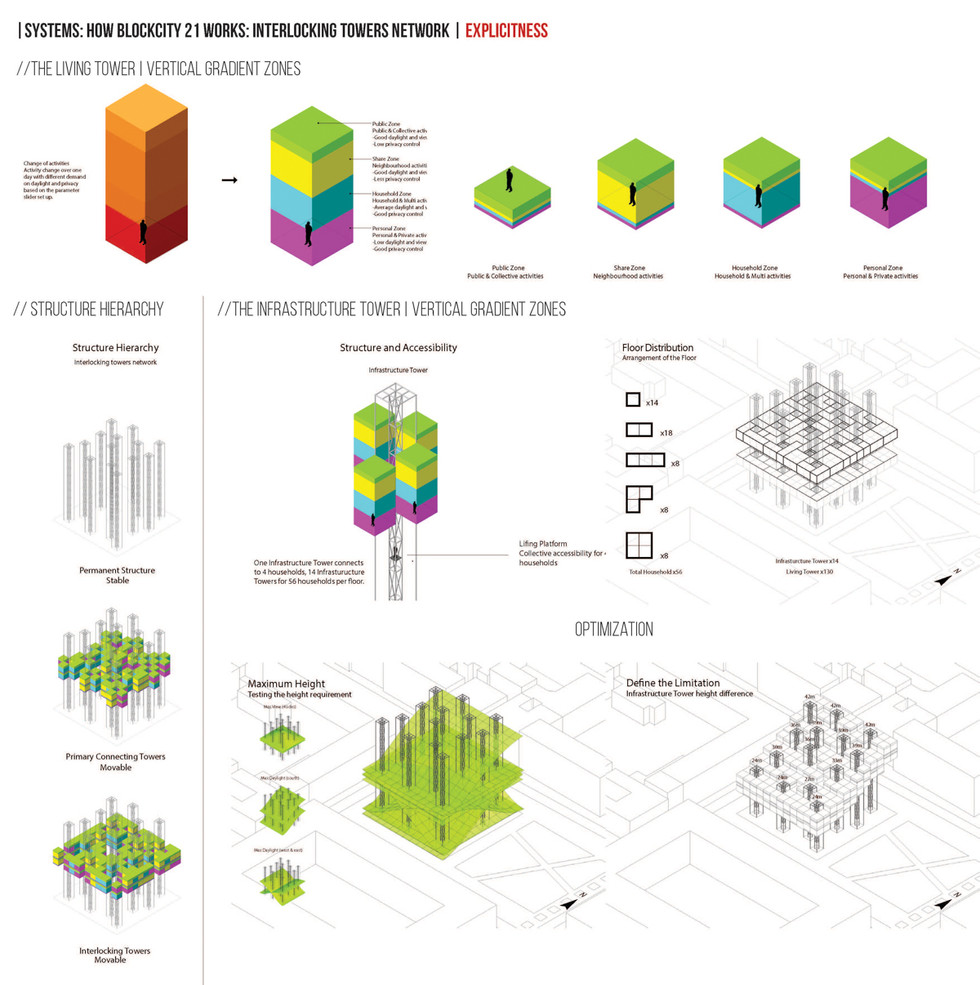ASA-Com-120929119307
- 23 เม.ย. 2561
- ยาว 2 นาที
อัปเดตเมื่อ 30 เม.ย. 2561
Mohammad Masa'd
Jordan
Abstract
Vernacular buildings across the world provide instructive examples of sustainable solutions to construction problems. Yet, these solutions are rapidly disappearing and making way for innovative building technologies that can applied globally without domestic or regional restrictions. This change begs the question of what 21st Century contemporary vernacular should be; with most of earth’s population continuously moving from rural areas into cities, cities are becoming more and more dense with people, yet there remains a lack of efficiency in the use of space, thus creating less land and making whatever space is available much more expensive despite Humanity’s huge current technological capacity which can create much more efficient and advanced models of construction and use of space and furniture.
“BLOCKCITY 21” suggests taking the familiar generic city housing block (Berlin as an example), and creating a much more efficient model of it, according to simple human scale needs. Vernacular here is no longer associated with a certain environment but -in a somewhat Modernist tradition- rather with a global standard unit of measurement; a single person.
- Can Vernacular be a catalyst, a variable, a process, rather than a static element?
In “Blockcity 21”, “Vernacular” is a catalyst because it offers new ways of organization for living and working, it is a variable that differs according to each and every person/family as well as activity instead of materials and climate, it is a process that is ever changing as long as we have new technology and knowledge that allow us to optimize our buildings.
- Can Vernacular be a language from which others can spring from and use?
“Blockcity 21” is a new way of community living that sanctifies the privacy of the single person as well as preserves and empowers the community by creating various and endless types of spaces.














ความคิดเห็น